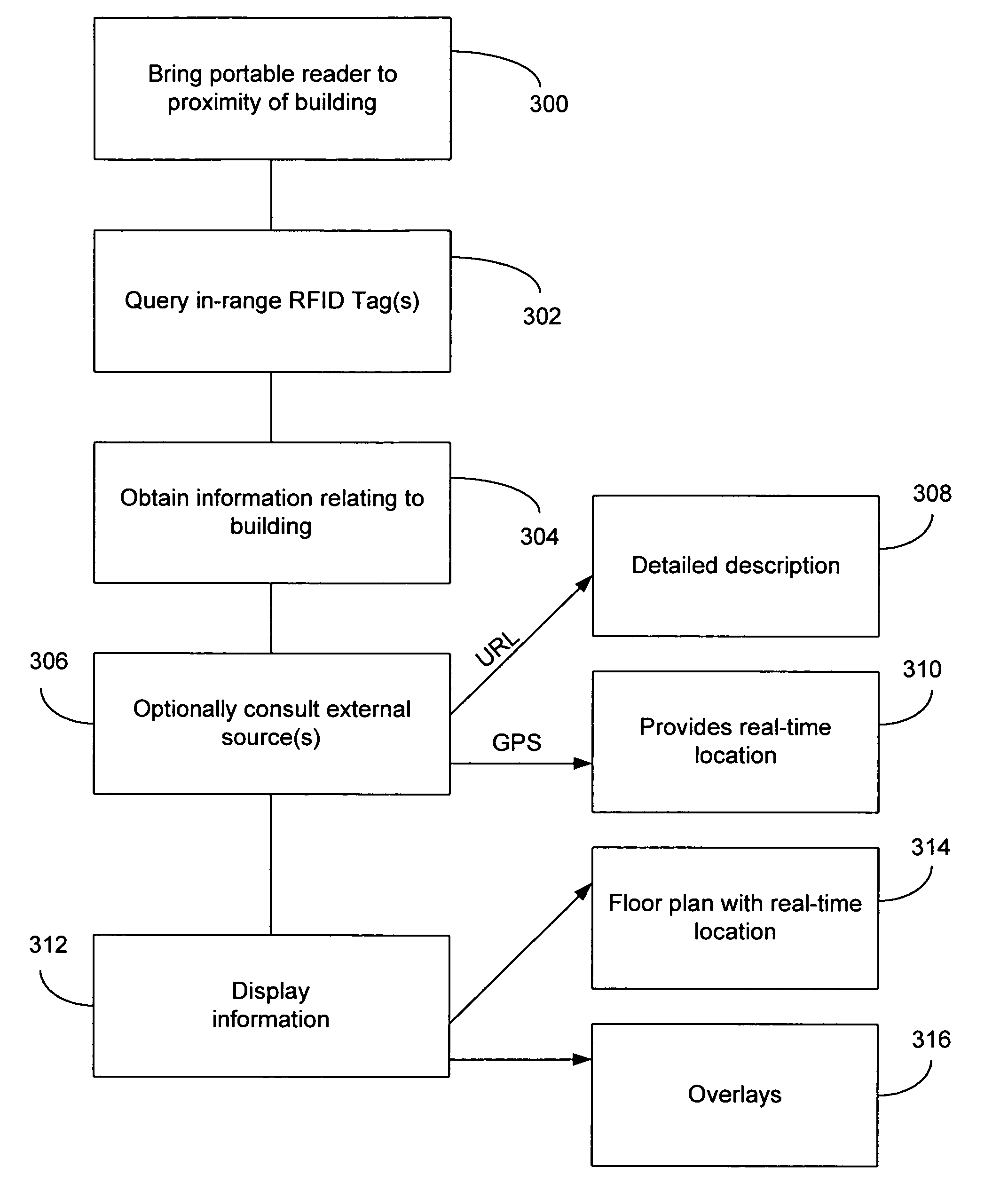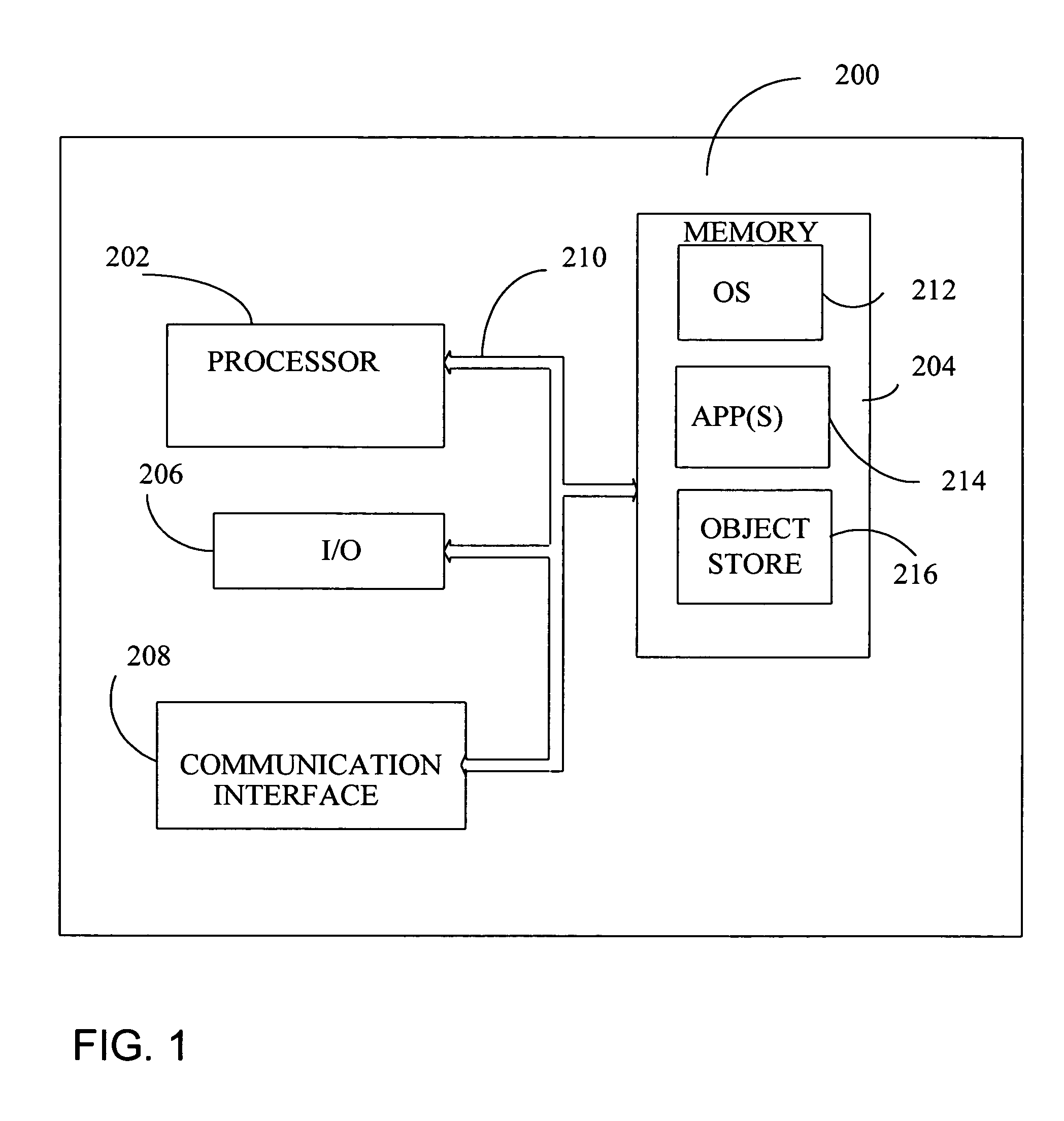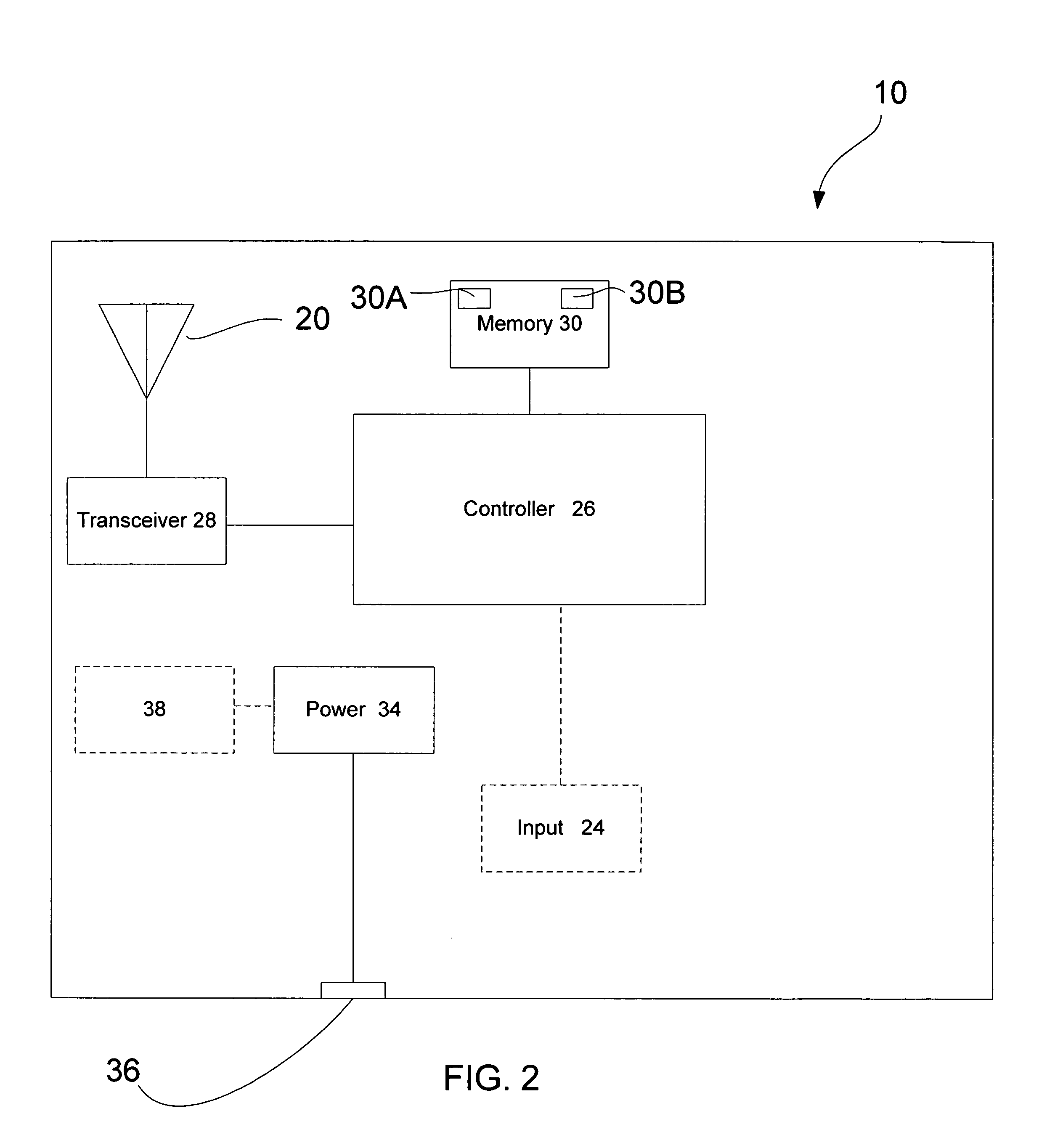Wireless self-describing buildings
a self-describing, wireless technology, applied in the field of building, can solve the problems of not being able to easily consult nor use information, houses may have to have significant remedial work done, and the majority of information is generally not passed along
- Summary
- Abstract
- Description
- Claims
- Application Information
AI Technical Summary
Benefits of technology
Problems solved by technology
Method used
Image
Examples
Embodiment Construction
[0010]FIG. 1 is a block diagram of a mobile device 200, which is an exemplary computing environment with which embodiments of the present invention are particularly useful. Mobile device 200 could be a smartphone, tabletPC, or pocketPC. Mobile device 200 can also include a wearable PC with any suitable peripherals, such as visor-mounted peripheral displays, which can provide useable view when worn with a helmet, such as that of a firefighter. Mobile device 200 includes a microprocessor 202, memory 204, input / output (I / O) components 206, and a communication interface 208 for communicating with remote computers or other mobile devices. In one embodiment, the afore-mentioned components are coupled for communication with one another over a suitable bus 210.
[0011]Memory 204 is implemented as non-volatile electronic memory such as random access memory (RAM) with a battery back-up module (not shown) such that information stored in memory 204 is not lost when the general power to mobile dev...
PUM
 Login to View More
Login to View More Abstract
Description
Claims
Application Information
 Login to View More
Login to View More - R&D
- Intellectual Property
- Life Sciences
- Materials
- Tech Scout
- Unparalleled Data Quality
- Higher Quality Content
- 60% Fewer Hallucinations
Browse by: Latest US Patents, China's latest patents, Technical Efficacy Thesaurus, Application Domain, Technology Topic, Popular Technical Reports.
© 2025 PatSnap. All rights reserved.Legal|Privacy policy|Modern Slavery Act Transparency Statement|Sitemap|About US| Contact US: help@patsnap.com



